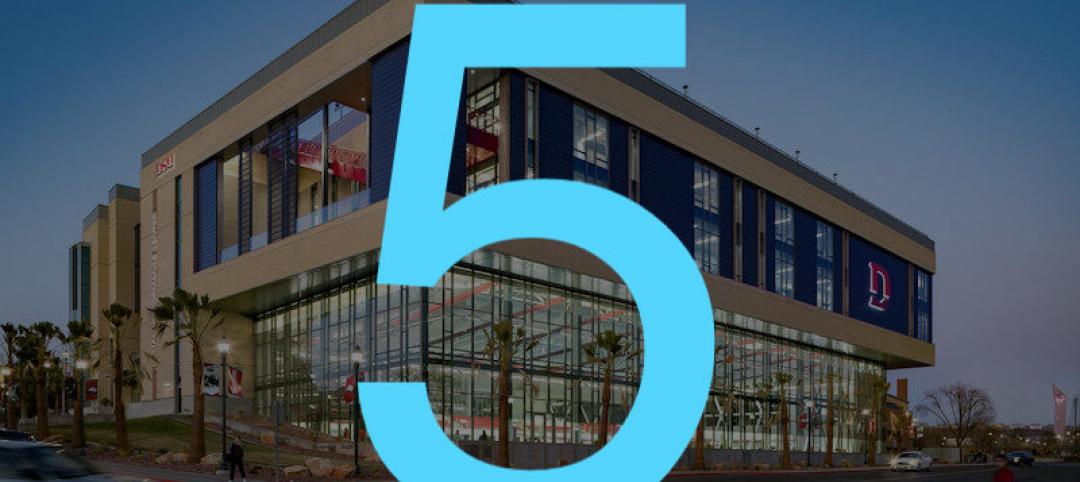I’ve been going to trade shows for more than 35 years, and it never ceases to amaze me how many suppliers I’ve never heard of. While there are always well-known brands on display, like Kohler and
Whirlpool, marketing strategies for most suppliers typically view the general public as an afterthought.
The relevance of brand recognition has always been debatable in the B2B universe. With notable exceptions like BASF, few manufacturers or industry groups see value in generating top-of-mind awareness for their products and services with consumers. It’s far more advantageous, their thinking goes, to aim at municipalities, developers, and their AEC partners.
“It’s not in their organizational DNA” to market to the public, observes Kimberly Jones, President of Butler/Till, a media planning firm.
But the public isn’t a passive bystander anymore. It is an avid stakeholder insisting that its input be factored into the design and construction of all kinds of projects: schools, offices, hospitals, multifamily housing, even sports arenas. Marketing that relegates the public to the sidelines misses an opportunity to influence—even tangentially—these influencers.
I was thinking about branding while standing on the periphery of the International WELL Building Institute’s booth at last month’s Greenbuild convention in Los Angeles, watching one of a steady stream of interviews with company execs and partners, presented to Greenbuild attendees. IWBI, which launched in 2013, is striving to create a brand. But for whom, I wondered?
Its WELL Building Standard stems from a larger wellness movement being spurred by a public that is demanding healthier home and work environments. But certification programs that measure and grade buildings and products have been mostly indifferent about propagating their brands.
The EPA’s Energy Star program, which has been around for 24 years, gained purchase as energy rates rose. But EPA’s WaterSense labeling program, which celebrates its 10th anniversary this year, has yet to muster that level of brand awareness, in part, because water is relatively inexpensive in most markets.
The WaterSense label is on 16,000+ product models. Through 2015, it has helped consumers reduce energy and water costs by $32.6 billion. Yet, fewer than one-quarter of Americans are aware of the brand, according to a GfK survey.
My guess is that the same is true, to a greater or lesser degree, of LEED, Green Globes, Cradle to Cradle, and other regimens that hold buildings and products accountable for their efficiency, sustainability, or healthiness. Imagine the marketing boost for manufacturers and builders if these certification programs more broadly impacted consumers’ decisions about what to buy or where to live and work?
The Cradle to Cradle label is on nearly 6,000 products under 400-plus corporate certificates. Those products include many consumer brands, from Shaw Industries (flooring) to Method (soap). The Cradle to Cradle organization is confident that the brand means something to “knowledgeable consumers” (read: Millennials), says Stacy Glass, the group’s VP of Built Environment.
But any consumer branding campaign would be futile without critical mass. “What I’d like to see is our label on one million products under 10,000 certificates across the built environment,” says Glass.
Related Stories
Market Data | May 4, 2020
The Los Angeles market continue to lead the U.S. hotel construction pipeline at the close of the first quarter of 2020
Nationally, under construction project counts hit a new all-time high with 1,819 projects with 243,100 rooms.
Market Data | May 1, 2020
Nonresidential construction spending declines in March as pandemic halts projects
Group warns loan threats are hurting relief program.
Market Data | May 1, 2020
6 must reads for the AEC industry today: May 1, 2020
DLR Group completes LA Memorial Coliseum renovation and over 50% of department stores in malls predicted to close by 2021.
Market Data | Apr 30, 2020
5 must reads for the AEC industry today: April 30, 2020
College programs help prepare students for careers in the construction industry and a national movement to cancel May rent takes shape.
Market Data | Apr 30, 2020
The U.S. Hotel Construction pipeline continued to expand year-over-year despite COVID-19 in the first quarter of 2020
Many open or temporarily closed hotels have already begun or are in the planning stages of renovating and repositioning their assets while occupancy is low or non-existent.
Market Data | Apr 29, 2020
5 must reads for the AEC industry today: April 29, 2020
A new Human performance Center and Construction employment declines in 99 metro areas.
Market Data | Apr 29, 2020
Construction employment declines in 99 metro areas in March from 2019
Industry officials call for new state and federal funding to add jobs.
Market Data | Apr 28, 2020
5 must reads for the AEC industry today: April 28, 2020
A virtual 'city-forest' to help solve population density challenges and planning for life in cities after the pandemic.
Market Data | Apr 27, 2020
5 must reads for the AEC industry today: April 27, 2020
Colleges begin building campus eSports arenas and PCL Construction rolls out portable coronavirus testing centers.
Market Data | Apr 24, 2020
6 must reads for the AEC industry today: April 24, 2020
Take a virtual tour of Frank Lloyd Wright's Robie House and Construction Contractor Confidence plummets.

















